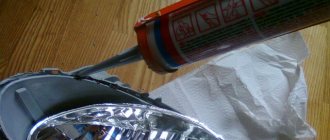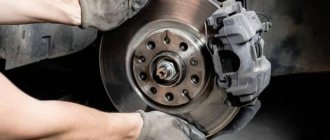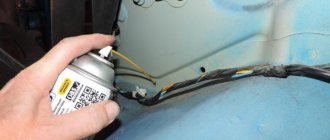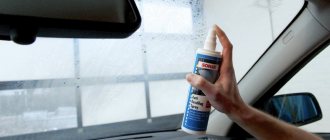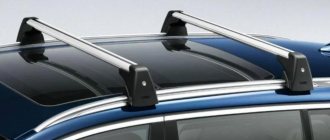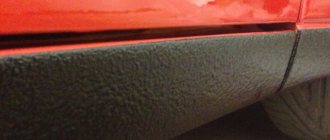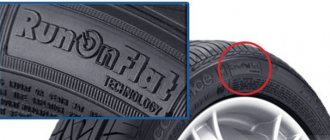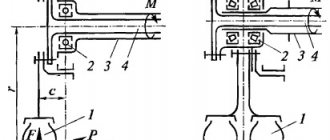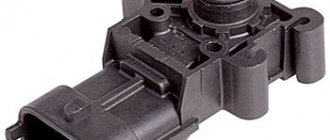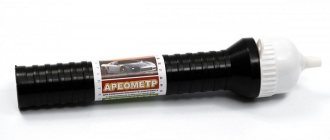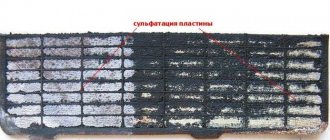The process of puttying a car body is one of the most important actions when leveling a damaged surface, and the layer of putty applied will become the basis for painting the vehicle. Therefore, the service life of the new paint coating depends on whether the car body is puttied correctly.
Both the putty itself and its application have their own nuances, therefore, if you want to putty a personal car with your own hands, you need to have some knowledge, including the sequence of work, and what material is best to use.
Purpose and application
Depending on the type of repair work being carried out, it must be borne in mind that the car putty should also be different, providing the best effect when using this substance. Let's look at the types of leveling agents and what they are intended for:
- Aerosol. Available in the form of a spray, it is used for the final treatment of large parts of the car body. To remove roughness caused by grinding, the so-called liquid putty is used, which is sprayed over the coating, which ensures an even layer;
- Closing pores. An acrylic product with one main component is used. It is necessary to eliminate surface unevenness after priming. It is produced as a ready-made composition; you just need to squeeze it out of the tube and spread it evenly over the body;
- Containing aluminum impurities. A very elastic product that does not allow large shrinkage of the material. It is used for repairing plastic surfaces, as well as minor dents or scratches. This putty will help protect the vehicle from cracks;
- Having a fiberglass structure. This putty is indispensable when it is necessary to repair deep cracks, significant rusty areas, dents and large irregularities. Considered as the initial coarse layer on which the finishing fine-grained substance will be applied;
- Suitable for plastic components. This putty is very convenient when carrying out repair work, as it has excellent elasticity;
- With plasticizers included in the composition. Used when the impact on the vehicle is minor. The putty has good contact with polymers, penetrating deeply into their structure.
Important! Before starting work on puttying a car with your own hands, you should purchase not only putty, but also sandpaper, primer, varnish, paint and material that will cover undamaged parts of the car.
What is the putty mixture used for?
A solution to the above problem on a small scale can be a car pencil , which will eliminate minor scratches. But in serious cases, only painting helps, before which you need to buy putty for the car and carefully prepare the body. The puttying process can solve several problems:
- Restoring the body shape after an accident.
- Removing dents and deep scratches received during vehicle operation.
- Restoration of areas affected by corrosion.
In addition to skills and tools, you should select the appropriate putty mass for the job.
Composition and technical characteristics
Automotive putty is used to eliminate damage and unevenness on the surface of metal and plastic parts, so it must have a viscous consistency.
All putty data must:
- Have good adhesion to the treated coating;
- Possess the ability to spread evenly with the surface;
- Sag as little as possible after hardening occurs;
- Easy to handle.
Attention! High-quality putty cannot be fragile!
Putties usually contain one of the following substances:
- Acrylic;
- A mixture containing nitrocellulose;
- Polyester resin.
Based on the presence of the main components, they are distinguished:
- One-component putty. If nitrocellulose is present in the base, then it is the final repair layer, but the drying process takes a long time. With an acrylic base, the slightest defects are removed, such as marks after sanding;
- Two-component putty. A more popular option, the main substances of which are epoxy or polyester resin. Before use, the putty is mixed with a hardener, which is present in the mixture in small quantities. Unlike polyester putties, epoxy putties take a long time to dry and are difficult to process, but coatings can be applied to them without an insulating layer.
Consumption per 1 m2
Depending on the type of putty and the material it is based on, the consumption for a specific area varies significantly. If a finishing agent is used to level out uneven surfaces of a car, the layer is small, and therefore a small amount of putty is required.
Advantages and disadvantages
Each type of car putty has its corresponding pros and cons:
- Rough putty can be used with almost any type of finishing coating, is resistant to temperature changes, very elastic, and has good plasticity. The only disadvantage is that the drying time is quite long;
- Putty with fiberglass is easy to process during the grinding process, has great strength, and will last a significant period of time;
- Finishing agents for repairs adhere well to other types of putties, are very elastic and resistant to temperature changes. This type can quickly harden, so it is not recommended to use it when using a large amount of the prepared mixture in order to facilitate processing of the applied layer;
- Liquid materials are easy to use and can be used on damaged areas of various sizes. The advantages include the ability to process a large surface in a short time, but the disadvantage is the rather high rate of hardening of the mixture;
- The main advantage of the universal coating is the ability to carry out very quick body repairs. This mixture has a strong structure and, when used correctly, forms a fairly smooth surface.
Fiberglass putty for cars
The basis of the reinforcing putty, which is designated as “Glass”, “Fibre” or “Fiber”, is made up of the same polyester and epoxy resins. In this case, the filler is fine abrasive and fiberglass. This composition is applied as a bottom layer and allows you to repair deep dents and eliminate through damage caused by corrosion. Glass fiber-reinforced metal putty has high strength and is able to withstand physical impacts better than other materials. It lacks elasticity - over large areas it cracks under bending loads and vibration. For this reason, material designated as “Glass” or “Fiber” is best used on sills, pillars, arches and other structural body parts. Another disadvantage of reinforcing compounds is that it is difficult to cope with such putty without experience due to the specifics of its application to the surface being treated.
Types of automotive putties
Based on the principle of use, putty can be divided into the following types:
- Having a general purpose. These include universal ones, with a lightweight structure, and also soft ones. The main substance is talc, or quartz microspheres with an empty body, providing lightness of the mixture and ease of stirring and application. Usually spread in a small layer over the surface of the damage, previously cleaned of rust;
- With a certain specific purpose. They, in turn, are divided into corresponding types:
- Reinforced with fiberglass. A very practical material with moisture-repellent properties, is quite plastic, and can be used even when applied in a thick layer. The fiber can be either short or long, both of which are not recommended for use on plastic parts. Do not apply to coatings exposed to temperature changes;
- With carbon fiber reinforcement. The advantages are strength and elasticity; it is better to cover the surface in several layers, since this type has significant fragility and is susceptible to cracks;
- Containing aluminum dust. You may experience difficulty mixing the mixture with the hardener. If the material has been applied correctly, water-repellent properties are formed, heat is well tolerated, therefore it is often used when repairing the hood, as well as when processing the seam after welding;
- Specially designed for application to bumpers. Very elastic and vibration-resistant, bonds well with plastic. When applied, apply in a small thickness;
- Spraying. It is used as a final layer, sprayed from a spray gun over a large area of damage. This putty should be mixed with a hardener, which is also in a liquid state, and after drying, the coating must be sanded and coated with a primer;
- Finishers. Apply at the final stage of repair. Due to the low viscosity, a thin spread over the surface is ensured, with a thickness of less than two millimeters;
- Having only one component. This is an independent mixture that does not need to be combined with a hardener. Only minor damage left after leveling can be covered up. Apply over the primer, right before the painting process.
Classification or which putty to buy for car body restoration and not make a mistake
In order to get the highest quality result at the end of the repair process, you need to know the basics of choosing and using putty material. Therefore, when buying products of this nature, you should pay attention to the following details:
- Interaction of material with metal and plastic.
- The percentage of shrinkage after drying should be at a minimum level - this indicates high quality characteristics of the finish.
- The plasticity of the mixture, it should be easily and evenly applied to the body.
- After hardening, the layer should not crack.
- The solution must be compatible with the paint coating that will be applied after the restoration.
Anyone who is interested in what auto putty is and which one has shown itself to be better in practice should take into account the chemical composition of the mixture. Recently, polyester putty solutions have become popular. If we compare them with acrylic or nitro-based materials, polyester ones dry faster and have less shrinkage.
Any putty mixture consists of fillers with pigments, a binder and additives. Strength, degree of shrinkage, elasticity and processing conditions depend on the former; pigments are responsible for color. Binding components are responsible for the polymerization rate, adhesion and strength of the layer.
Types of polyester blends
Motorists who know how to paint a car are aware that the plane leveling procedure includes two stages: filling and finishing. First of all, large irregularities are pre-leveled, after which the applied layer is finished. Following from this, putties are divided into two groups:
Materials of the first category are also called rough or basic. There are times when finishing mixtures are called finishing, finishing or thin. It is enough to know that deep defects are quickly eliminated using filling solutions, but they are not able to create a smooth plane, which means they require additional processing.
Putty rules
To get a high-quality, smooth surface after puttying, you need to follow some rules:
- Degrease and clean the damaged area;
- Combine putty and hardener in the correct proportions, depending on the expected effect.
Important! It is not necessary to use a lot of hardener; too much will lead to cracks.
- Clean the spatula before applying putty for your car;
- If there is a large volume of work, it is better to apply several thin layers rather than one thick layer in order to avoid the entry of air and increase the density of the composition;
- There is no need to sand the product if the next layer is leveled in the interval from ¼ hour to 1;
- It is better to use a medium-sized spatula when applying, and level with a large one.
Applying automotive putty to the ground
It is recommended to apply the putty only on primer with an admixture of epoxy. This is carried out during restoration, and not during full repair of damage, when the car is cleaned to bare metal in order to protect the surface from corrosion. When quickly restoring a car's surface, the use of primer is not required.
Finishing coat of automotive putty
This putty is applied in a small thickness and is well evenly distributed over the surface. When the coating begins to harden, a sticky feeling is possible, which can be removed with a solvent, and then the damaged area is sanded.
What mistakes do beginners make?
To carry out the work correctly and achieve the desired result, you should strictly follow the instructions, choose the right material and listen to some recommendations.
Beginners often rush and manage to create problems that are then more difficult to fix than applying the coating.
It is important to remember and follow these recommendations:
- Carry out all work on a dry surface, because moisture forms corrosion, which corrodes the surface. During preparatory work, when you wash the car, let it dry thoroughly;
- You cannot put putty on a glossy surface; it will simply peel off. Degreasing, cleaning and only then applying a layer of putty.
- Two spatulas are used in the work - for applying large and small putty.
- Before each application, stir your mass, because thick components form at the bottom, and resin on top.
- draw up a work plan for yourself, describe at what stage and what materials will be used, then you will definitely not confuse anything.
- You should not add hardener to the jar of putty material; try to follow the proportion specified in the instructions;
- Many people mix more putty, and then are left without material, because they forget that the material hardens in 10 minutes. During this time it is impossible to process all areas, so separate the material.
- hold the spatula at a 60 degree angle.
- acid primer, primer-filler is used in areas with corrosion, which cannot simply be left without treatment.
- To avoid the appearance of pores when applying the material, the material should be thoroughly mixed.
Puttying a car is a very labor-intensive process, especially if you decide to do it yourself.
It is important to take this issue responsibly and carry out the work calmly and confidently; this is the only way to achieve a perfectly flat surface, onto which paint can then be applied.
Drying automotive putty
Drying of putty can be done both in natural conditions and with the help of infrared lamps. The heating temperature during this procedure usually varies from 60 to 80 degrees. Although in some cases the manufacturer declares a maximum value reaching 100 degrees. You must not forget about the need to dry the treated surface (after “wet” grinding).
Both manufacturers and consumers of these products are bothered by fine dust that occurs during manipulations of processing the hardened coating with sandpaper, to avoid the appearance of which, as well as to prevent clogging of the sanding tool, “wet” processing is used, which involves moistening with water. However, the presented option has a serious drawback: the porous structure of the putty swells when saturated with liquid.
When purchasing some mixtures, you should avoid wetting, because this process can increase the drying time and change the initial volume. We must not forget that if the surface is poorly dried, moisture will, after a certain time, lead to corrosion and lag in the paint composition. In this regard, before carrying out putty work, you need to refer to the instructions and find out which method of processing the material (dry or wet) is best to use in a particular case.
Tips and recommendations for use
The body repair process will be easier if you follow some recommendations:
- Before diluting the car putty, you need to mix the putty and hardener well;
- At elevated temperatures, it is necessary to reduce the amount of hardener by half;
- To obtain a thick mixture, you can add a polymer with fiberglass;
- The putty should be stored only in airtight containers;
- On parts with increased vibration, it is recommended to use putty with greater elasticity.
Review of popular manufacturers
Many automobile mixtures deserve the attention of consumers. The quality of such putties and the impeccable reputation of the manufacturers leaves no doubt. Let's look at a few of the most popular formulations:
- Carfit SOFT is a two-component polyester mixture characterized by medium density and light structure. The putty is indispensable for working with small and medium-sized defects on the body of a vehicle.
- NOVOL FIBER with glass fiber is a composition with increased strength. The putty perfectly fills imperfections and eliminates unevenness.
